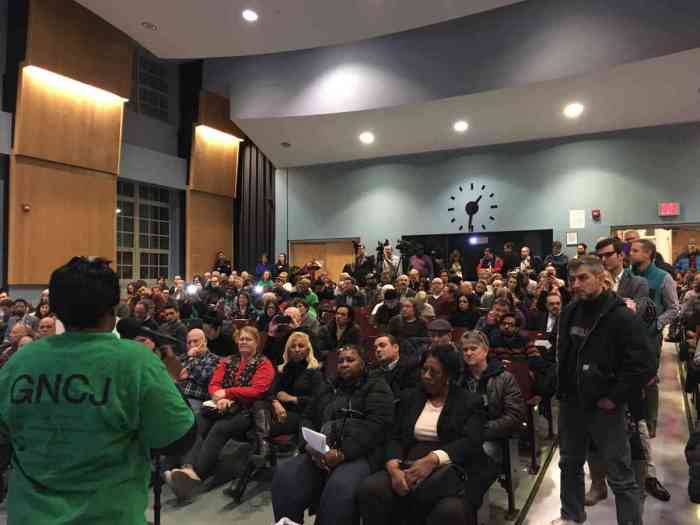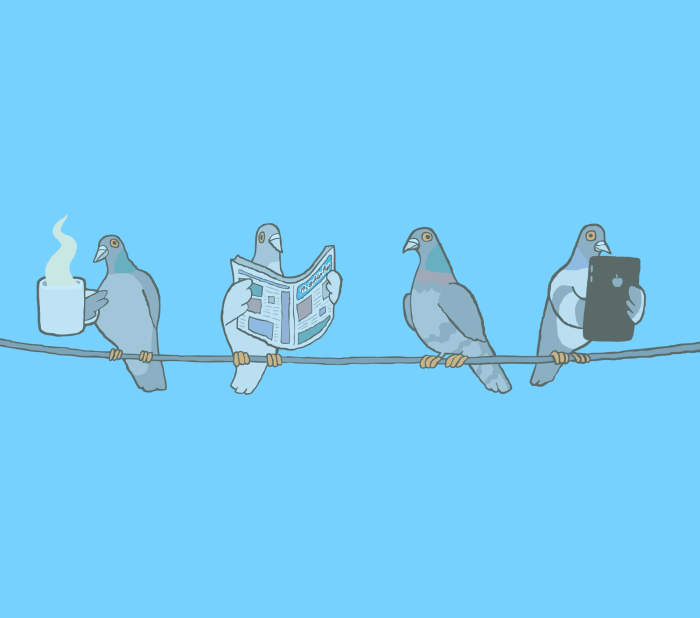They want to take it outside!
A coalition of neighborhood groups are demanding the city allow small, socially-distanced outdoor public meetings to solicit input on the proposed Gowanus rezoning, arguing that remote town halls don’t allow for proper public feedback.
“Several of us have [attended virtual] hearings and have real concerns that it’s not going to be accessible for everybody in the neighborhood,” said Andrea Parker, the executive director of the Gowanus Canal Conservancy.
The canal stewards are part of the Gowanus Neighborhood Coalition for Justice, which penned a letter to Department of City Planning director Marisa Lago on Sept. 3 calling on officials to set up spots in the neighborhood where locals can give their two cents on the sprawling land use overhaul.
Parker said that city planners should take their cues from proposals to shift some schooling outdoors, and organize similar opportunities for the often raucous public meetings to resume in parks, streets, school yards, or community centers.
“We live in a very creative community and really we need to leverage it to make sure everyone is engaged in these big decisions,” she said.
City planners recently set up a new portal called NYC Engage where people can check a calendar for upcoming meetings and learn how to watch them and give feedback via web-conferencing platforms Zoom and WebEx or by phone call.
Officials resumed the city’s public review known as Uniform Land Use Review Procedure — or ULURP — as of Sept. 14 after a six-month pandemic pause, launching back into hotly-debated proposals this week, such as the Flushing waterfront in Queens.
But the coalition — which consists of groups like the business boosting Fifth Avenue Committee, the local public housing developments, and tenant advocates — argues that the digital move by itself won’t cut it for a proposal neighborhood-wide revamp like the Gowanus rezoning.
Parker said that in the virtual meetings she and others in the coalition have attended, technical difficulties like a bad internet connection, sound cutting out, or trying to read presentation slides on a small smartphone screen have made it tough to follow along for some participants, especially lower-income folks who don’t have access to a computer or reliable wifi.
GNCJ also suggested the city could set up spaces for the community to record testimony to be played at hearings, broadcast meetings on public access television with an option to call in, so that people without an internet connection can still see presentations and make their voices heard.
The city could even go a step further and provide free internet access and tablets to local public housing residents, the letter suggests.
The coalition’s push comes after local Assemblywoman Jo Anne Simon and Gowanus Dredgers captain Brad Vogel urged DCP in a City Limits op-ed to put the rezoning on hold entirely, arguing that not allowing for the heated in-person meetings stripped locals’ ability to properly weigh in on the proposal.
DCP still has yet to publish a draft environmental impact statement, which formally triggers the roughly seven-to-nine-month ULURP timeline, but GNCJ’s letter called on the city to release that document at least two months before starting the clock on the review process, so that residents can review the complex proposal and check whether the city has heeded their concerns.
For example, the coalition has told the city that the rezoning should include some $237 million in funds for repairs to local New York City Housing Authority properties, to fix broken heaters, as well as clear led paint and mold from the buildings.
Another demand by environmentalists in particular is that planners detail how exactly developers will manage to stem pollution from combined sewer and rainwater flowing from their buildings into the noxious canal, which the feds are planning to cleanse under the Superfund program.
The group also urged the city to include a study on how the rezoning would affect the neighborhoods demographics, in line with Public Advocate Jumaane Williams in-limbo bill mandating a so-called Racial Impact Study for major land use changes.
“We all know from the data that Gowanus over the past 10 years has become more white and how that will be impacted by the rezoning will be important to see,” Parker said.
A spokesman for DCP thanked the group for their input, but declined to commit whether the city would go beyond remote hearings via NYC Engage.
“We thank community leaders and residents for their thoughtful input, and will continue working together as we move the planning process forward,” said Joe Marvilli in a statement. “The Gowanus plan aims to bring much needed permanently affordable housing, jobs and significant environmental benefits to this historic Brooklyn neighborhood. This ongoing, transparent public discussion is solidly grounded in advancing equity, in ensuring all voices are heard and that all benefit.”
The rep added that planners will analyze the rezoning’s impact — including on the neighborhood’s racial makeup — through the EIS, which they are currently drafting, and pointed to the city’s plan to fight segregation called Where We Live NYC.























